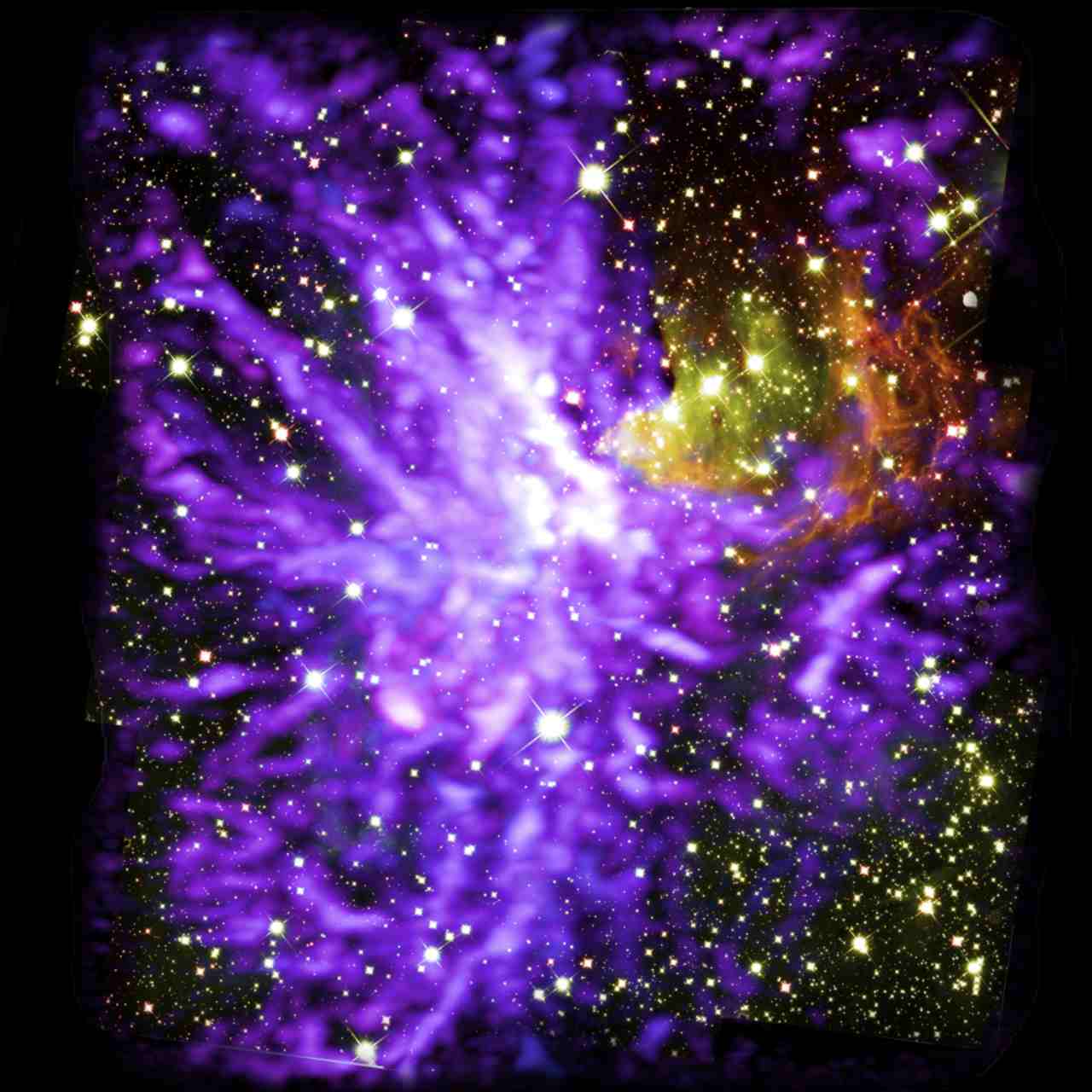FP TrendingJul 04, 2020 15:21:46 IST
Celestial fireworks in a star cluster called G286.21+0.17 have now been observed by astronomers.
The Atacama Large Millimeter/submillimeter Array (ALMA) radio telescope in Chile joined hands with the Hubble Space Telescope to create a mosaic of the star cluster, which appeared like ‘cosmic fireworks’ highlighting purple streamers and sizzling stars, as per a public release of the image.
Most stars in the universe, the Sun included, were born in huge star clusters, according to a Science Daily report. While the clusters are the building blocks of galaxies, their formation still remains shrouded in mystery.

Image of star cluster G286.21+0.17, caught in the act of formation. [Click image to see animated gif of stellar formation] Image credit: ALMA/Y Cheng etc al/Hubble/NRAO/AUI/NSF
As per the results, published in The Astrophysical Journal, the mosaic was made with more than 750 individual radio observations that the ALMA recorded and 9 infrared images from the NASA/ESA Hubble Space Telescope.
The cluster itself is located in the Carina region of our galaxy, about 8000 light-years away.
A statement released by the National Radio Astronomy Observatory explained that ALMA was able to capture “dense clouds made of molecular gas” (the purple ‘fireworks streamers’), while stars in the image are visible in infrared light, as seen by the Hubble Telescope.
“This image shows stars in various stages of formation within this single cluster,” Yu Cheng, lead author of the study, from the University of Virginia in Charlottesville, said in the statement.
Cheng went on to add that the process may take at least a million years to complete.
Co-author Jonathan Tan of Chalmers University in Sweden and the University of Virginia said that the image highlights how dynamic and chaotic the process of the birth of a star really is.
“We see competing forces in action: gravity and turbulence from the cloud on one side, and stellar winds and radiation pressure from the young stars on the other,” Tan said.
Find latest and upcoming tech gadgets online on Tech2 Gadgets. Get technology news, gadgets reviews & ratings. Popular gadgets including laptop, tablet and mobile specifications, features, prices, comparison.
Post a Comment